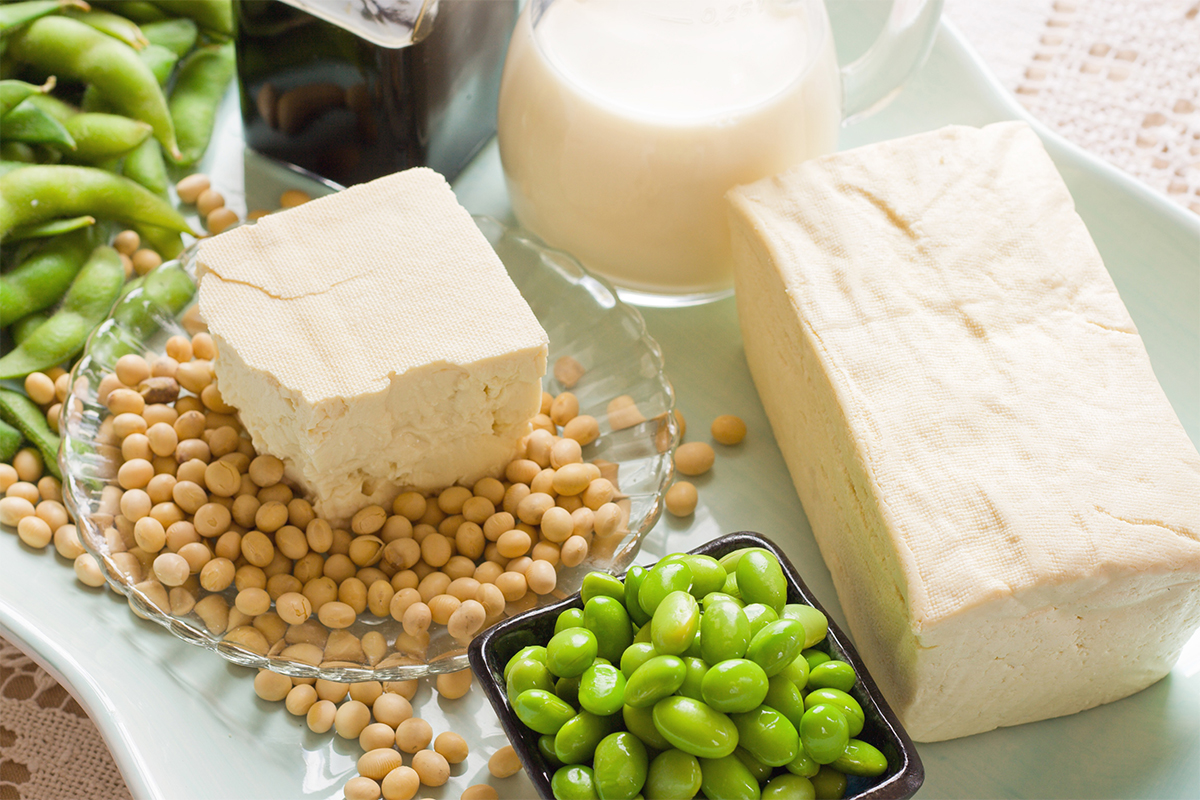What are the benefits and risks of consuming soy?

The growing popularity of soy products in U.S. and European diets has raised considerable controversy. While the soy-rich diets of Asia generate documented health benefits, questions persist about the safety of soy in some products.
To make sense of this debate, it helps to understand the nature of dietary compounds called phytoestrogens—plant-based compounds whose chemical structure resembles estrogens, the female sex hormones of mammals. Also called isoflavones, phytoestrogens are most prevalent in soybeans and red clover.
Phytoestrogens have been linked to better heart health and reduced risk of breast and prostate cancers. They can help with osteoporosis and menopausal symptoms and may possibly improve cognitive functions. For all these benefits, however, the question of whether we should consume more soy-based products or add soy supplements to our diets has not been fully resolved.
Konstanin Yakimchuk, MD, PhD, senior researcher and expert medical and scientific writer of the Karolinska Institutet in Stockholm, Sweden, explains the fundamentals of the phytoestrogens at the root of the soy-safety debate.
Effects on Inflammation and Metabolic Diseases
Experimental data show that phytoestrogens—including genistein, one of the main soy isoflavones—may be useful for treating inflammation, one of the basic mechanisms of metabolic syndrome, atherosclerosis, arthritis, obesity and diabetes (Yu et al. 2016). Just two servings of soy foods can increase blood flow in heart vessels and improve the health of heart muscle. Phytoestrogens also widen blood vessels, reduce blood pressure, decrease blood cholesterol levels and prevent atherosclerosis in blood vessels (Rietjens, Louisse & Beekmann 2017). Note, however, that these plant hormones can suppress the human immune system, which could pose risks (Masilamani, Wei & Sampson 2012).
Soy for Postmenopausal Women
Researchers have found that supplementing diets with 30 milligrams of genistein daily can suppress osteoporosis in postmenopausal women. That dosage mirrors the regular intake of isoflavones in the traditional Eastern diet. Moreover, several studies suggest that isoflavones may reduce hot flashes and other postmenopausal symptoms (Messina 2014).
Societies with high consumption of soy foods or isoflavones also see a lower prevalence of breast cancer and other hormone-regulated cancers (Rietjens, Louisse & Beekmann 2017). However, some studies have reported an increase in abnormal growth of breast tissue after short-term intake of isoflavones (Rice & Whitehead 2006). Thus, the benefits of soy in women’s diets must be weighed against its potential risks.
Soy’s Impact on Men
Phytoestrogens also improve men’s health in several ways. Consider the impact on prostate cancer, the second-leading cause of cancer deaths in U.S. men. Notably, Asian populations with a high intake of soy are less affected by prostate cancer. Moreover, multiple studies in Asia, the U.S. and Europe have found that regular consumption of soy products decreases the risk of prostate cancer (Applegate et al. 2018). However, intake of isoflavones extracted from red clover has been linked to prostate cancer cell death by the process known as apoptosis (Reiter, Gerster & Jungbauer 2011).
Some Cautions
Many scientists agree that the data on health benefits of soy-derived isoflavones suggest potential preventive and therapeutic applications. But in spite of this healthy optimism in the scientific community, phytoestrogens should be valued and used with caution.
No matter how promising some studies may sound, the potential effects of plant hormones on male and female reproductive systems are not fully understood (Bennetau-Pelissero 2016). Excessive soy intake may cause an imbalance in the menstrual cycle, and several studies have associated decreased sperm count and erectile dysfunction with high intake of soy products. Soy protein is also one of the main triggers of food allergies.
It’s clear that more studies are needed before we can solve the puzzle of phytoestrogens. More research is needed to determine exactly which populations might best profit from isoflavone supplementation. You will want to consider what type and amount of soy (if any) you want to consume based on your individual health needs and family history.

